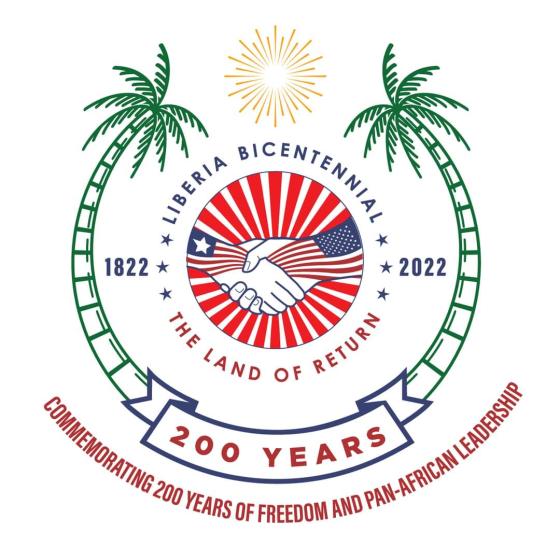Liberia: Bicentennial for Whom

BY PROFESSOR AUGUSTINE KONNEH, PhD
DEAN, AME UNIVERSITY GRADUATE SCHOOL
Like most African States, Liberia is a multi-ethnic and multi-cultural state—a “mosaic”-- that consists of four major cultural stocks: Africans who were repatriated from the United States known as Settlers or Americo-Liberians, Africans from the Caribbean, Africans from other parts of west Africa, including Sierra Leone, Ghana, Nigeria, Mali and Togo.
Against this backdrop, national celebrations must reflect the historical and cultural experiences of all Liberia’s major cultural stocks.
However, the Bicentennial celebration is designed to show case the historical and cultural experiences of only the African group that came from the United States beginning in 1821.
While it is good to celebrate but given the history of antagonism between the Indigenous Africans and the repatriated Africans from the U.S., care has to be taken that such celebration of the repatriated Africans does not contribute to further inflaming the antagonistic relationship between the two groups.
Beginning in 1821, a small group of African Americans called settlers arrived at a location that later became known as Cape Montserrado. Their voyage was underwritten by the American Colonization Society (ACS) with the support of the American government.
The enterprise was presaged by a declaration made by the sponsors that the American Africans would be able to find a place that will give them a new start on life. It was then argued, they would be free from the discrimination and persecution that was their frequent lot in America.
The new arrivals from America found in what became known as Liberia, the following sixteen (16) indigenous ethnic groups: Gola, Kpelle, Bassa, Loma, Gbandi, Mano, Mende, Mandingo, Krahn, Kissi, Kru, Grebo, Vai, Belle, and Dei.
Each of these groups occupied its own territories. Eight of the 16 ethnic groups (Belle, Gbandi, Gola, Kissi, Kpelle, Lorma, Mandingo, Mende) until recently when a new county Gbarpolu was established, occupied the Northeastern part of Liberia (Lofa County).
The Mano, and Gio the Northwestern part of Liberia (Nimba County); the Kpelle occupied the central part of the country, Belle the Gola occupied the western part of the country; the Kru and Bassa occupied the eastern part including most of the coastal area; and the Vai and Dei the southeastern part of the country.
These groups were involved in extensive trade and had their own cultural traditions and social institutions. For example, the Gbandi, Gola, Kissi, Kpelle, Lorma, Mende, and Vai had the poro. The Mandingo had their Quranic schools. The Poro and the Quranic schools provided civic training and religious instruction. These institutions became vehicles for the transmission and preservation of various ethnic cultures and traditions that we still observe today.
The early days of Liberia so named for the freedom it signified for African Americans, were clouded by difficulties such as disease, poor leadership, local hostilities, limited numbers of colonies, and inexperience, which almost led to their extinction.
In spite of the initial difficulties and clashes/confrontation that ensued as a result of the encounter between the settlers and some of the indigenous groups, they managed to form alliances that later on led to Independence and gradual unification of the nation. Although, we continue to witness tensions as a result of inequality between the indigenous and settler groups.
The idea of a Bicentennial celebration is only relevant to the settlers or repatriated Africans who came in the beginning of 1821 and not intended for the indigenous Africans who had already established institutions and systems and are the original culture stream met by the settlers or the Africans, who migrated from the Caribbean and other West African countries.
The key question is, how do we promote unity among the Liberian groups? How do we locate the other African groups within the Bicentennial celebration?
I suggest that we have a celebration that is inclusive of the other African groups to be named “The Return of the African.” Also, I ask that we revisit or redefine our national symbols that are outright exclusive, divisive, and diametrically opposed to the process of unity and patriotism.
According to Professor George Kieh, jr.,” the national symbols of Liberia need to be rethought and redesigned so that they can embody and reflect and represent the collective and shared cultural and historical experiences of all of the stocks and ethnic groups that constitute the Liberian state.”
